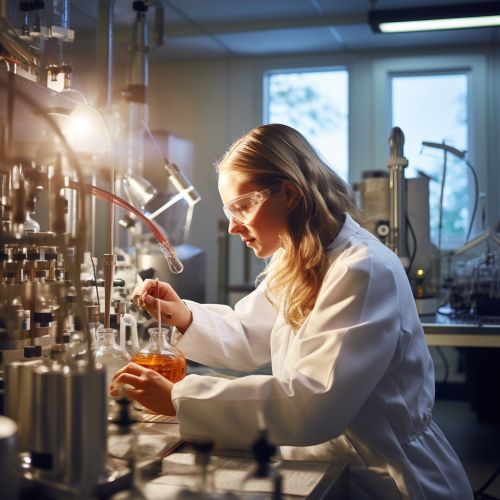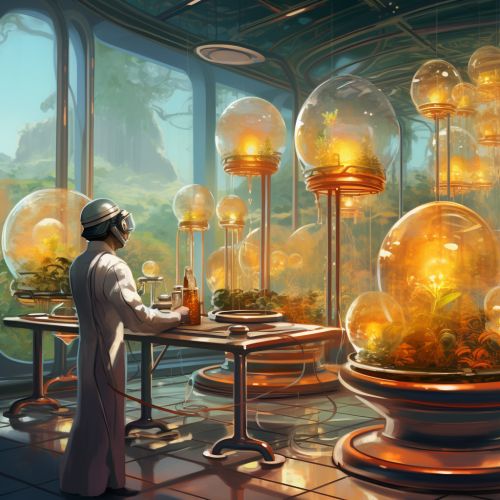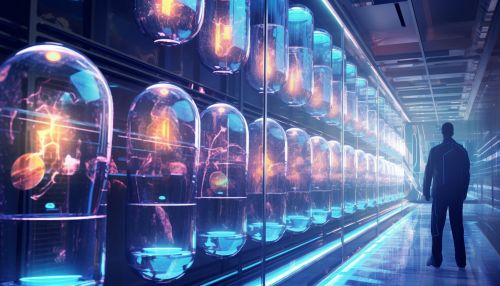The Chemistry of Pharmaceuticals
Introduction
Pharmaceutical chemistry is the discipline at the intersection of chemistry, especially synthetic organic chemistry, and pharmacology and various other biological specialties, where they are involved with drug design, chemical synthesis and development for market of pharmaceutical agents, or bio-active molecules (drugs).


Drug Discovery and Design
The process of drug discovery involves the identification of candidates, synthesis, characterization, screening, and assays for therapeutic efficacy. Once a compound has shown its value in these tests, it will begin the process of drug design in which optimized derivatives are developed. This process involves optimization of absorption, distribution, metabolism, and excretion, commonly referred to as ADME.
Drug Synthesis
In the process of drug synthesis, pharmaceutical chemists have several challenges to overcome. The first of these is the need to create a compound that is not only effective at treating a particular condition, but also safe for human consumption. This involves a detailed understanding of the molecular structure of the compound and its interactions with human biology.


Drug Delivery
Once a drug has been synthesized, the next challenge is to deliver it to the appropriate location in the body where it can have its therapeutic effect. This is often achieved through the use of drug delivery systems such as tablets, injections, or transdermal patches.
Drug Metabolism
Drug metabolism is the metabolic breakdown of drugs by living organisms, usually through specialized enzymatic systems. This is crucial for the removal of the substances and contributes to the detoxification and elimination of these compounds from the body.
Drug Development and Regulation
Drug development is the process of bringing a new pharmaceutical drug to the market once a lead compound has been identified through the process of drug discovery. This involves preclinical research on microorganisms and animals, filing for regulatory status, and clinical trials on humans. Once these steps are completed, the drug may be approved for use by the FDA or other regulatory bodies.
Future Directions in Pharmaceutical Chemistry
The field of pharmaceutical chemistry is constantly evolving, with new techniques and technologies being developed to improve the drug discovery and design process. Some of these include the use of artificial intelligence in drug design, the development of new drug delivery systems, and the exploration of new therapeutic targets.


